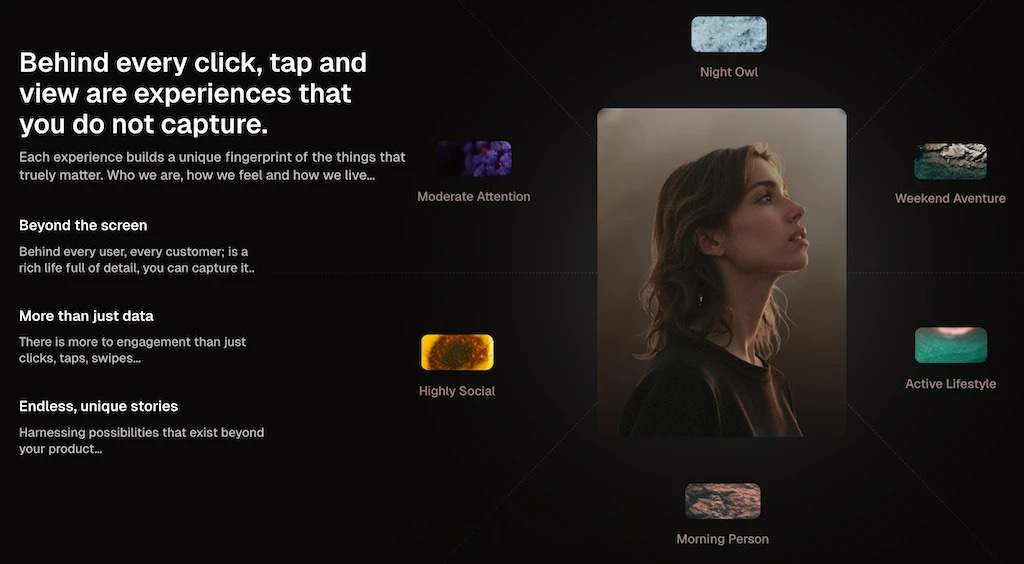Going Beyond a Product
Today's featured startup believes that knowing your users is the ultimate key to success.
Project Overview
Sahha is a platform that helps developers of health and fitness-related services increase user engagement by leveraging data from wearable devices.
Most users of such services already wear smartwatches or fitness trackers. The first level of Sahha’s functionality is to allow developers to access their users' health metrics—heart rate, step count, activity periods, sleep duration and quality, and more.
However, raw data alone is not particularly useful. To make it actionable, Sahha provides a second level of functionality: it translates various health indicators into generalized health ratings.
These ratings include:
✅ Sleep score—evaluating sleep quality.
✅ Activity score—measuring physical activity levels.
✅ Fitness score—assessing overall fitness.
✅ Mental well-being score—based on stability across these metrics. For instance, a person with consistent sleep, regular activity, and steady heart rate likely experiences lower stress levels.
This enables developers to offer personalized experiences and monetize additional features—from meditation sessions and fitness challenges to targeted product recommendations (even sleep aid supplements).
But Sahha takes it a step further, introducing behavioral archetypes based on user habits and lifestyle patterns.
These archetypes include:
Night Owl—stays up late, wakes up late.
Early Bird—sleeps early, wakes early.
Weekend Warrior—inactive during weekdays, highly active on weekends.
Morning Mover—energetic in the morning, slows down later.
Midnight Hustler—works late into the night.
Shift Worker—has distinct alternating activity periods.
By categorizing users this way, developers can create highly targeted engagement strategies. For example:
A Weekend Warrior might receive a Thursday reminder about an upcoming Sunday cycling event.
A Midnight Hustler could be a startup founder—offering them productivity tools or late-night wellness solutions could be a smart move.
One of Sahha’s clients, FitFocus, used these insights to triple user engagement and boost projected annual revenue by $175K in just 12 weeks.
Sahha’s pricing starts at $199 per month for the first 1,000 users, with additional users billed at $0.10 per user.
Originally from Australia, Sahha has raised $2.6M AUD (~$1.64M USD) in funding. Just yesterday, the startup announced its new archetype segmentation feature on Product Hunt.
What’s the Gist?
User segmentation platforms are not new—many tools already help developers categorize users based on in-app behavior.
But Sahha’s core innovation is analyzing user behavior beyond the product itself.
Most engagement tools focus on how a user interacts with an app—how often they log in, what features they use, their response to notifications, etc.
Sahha flips this approach by looking at users’ real lives. Their motto captures this perfectly: “Boost user engagement by understanding their life OUTSIDE your product.”
This unlocks two game-changing insights:
To influence user behavior within your product, you first need to understand them as people.
Once you understand their lifestyle, you can discover entirely new opportunities for engagement and monetization.
For example:
A boxing training app could identify users with low mental well-being scores, ask them about their stressors, and offer relationship counseling services.
If many users take up boxing to manage stress from work or home life, the app could expand into meditation or anger management programs.
Sahha represents a paradigm shift—moving beyond in-app analytics to holistic user profiling. While some competitors are starting to explore this approach, Sahha is already ahead.
A parallel can be drawn with Subsets, a Y Combinator-backed startup that improves reader retention for online publications. Their platform identifies reading behavior patterns (e.g., daily morning readers vs. weekend binge readers) and tailors engagement strategies accordingly.
The next logical step? Predicting why someone reads a certain way—whether their habits change due to lifestyle shifts, evolving interests, or competitive influences.
In theory, a Subsets-like platform could do for publishing what Sahha is doing for health & fitness—identifying user archetypes based on reading habits. Better yet, merging these approaches could create a multidimensional user understanding.
Key Takeaways
Sahha’s archetype-based segmentation aligns with a broader tech trend—the rise of synthetic AI personas that serve as digital twins of target audiences.
With AI-driven user personas, companies can predict user behavior without real-world experiments—saving time, money, and reducing risk.
For example:
Lakmoos, a Polish startup, lets companies conduct instant audience research using AI-generated consumer profiles.
Artificial Societies, a recent Y Combinator graduate, created Wave, an AI model simulating VC investor reactions—helping startups refine pitches.
Their second product, Reach, can predict engagement for unpublished LinkedIn posts with 83% accuracy.
The key to building realistic AI personas is understanding users’ lives beyond their interactions with a specific product. Otherwise, AI-driven insights risk being one-dimensional and biased—just like the ancient Indian parable of blind men describing an elephant based on a single body part.
The future of marketing and product development will rely heavily on AI-driven user profiling platforms that capture a full picture of people’s lives.
The ability to predict user behavior across different contexts will give businesses a huge competitive edge—accelerating decision-making, reducing costs, and unlocking new revenue streams.
And the biggest opportunity? Building AI-driven marketing tools that go beyond product analytics and into full-fledged digital personas.
Whoever masters this next will shape the future of personalized engagement and predictive marketing.
Company Info:
Sahha
Website: sahha.ai
Featured on Product Hunt: March 12, 2025
Total funding: $1.64M, rounds: 3







